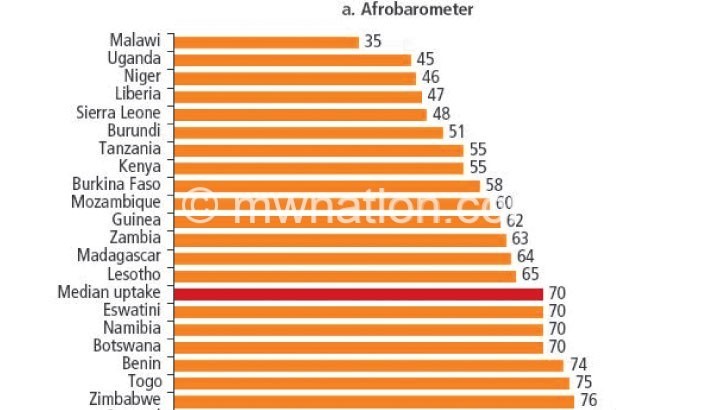Malawi electricity uptake low—report
At 35 percent, Malawi’s electricity uptake is the least in sub-Saharan Africa, an analysis of 32 countries on the uptake, reliability and economic impact shows.
Figures from a joint publication by Agence française de développement and the World Bank on electricity access in sub-Saharan Africa indicate that Malawi is lagging behind Tanzania (55), Mozambique (60), Zambia (63), Zimbabwe (76) and South Africa (98).
The report observes that while low income levels limit affordability for a vast majority of the population, translating into a low willingness to pay for electricity, large investment gaps, inefficient size of countries’ power systems, insufficient technical capacity and poor utility performance also play a part.

Reads the report in part: “The uptake figures in areas already covered by the grid reveal much room for progress if the demand-related challenges are identified and appropriately addressed.
“Although the differences in coverage among countries point directly to vast differences in infrastructure development, the disparities among uptake rates stress the significance of demand-side barriers to electricity.”
According to the report, Rwanda and Malawi have shown significant gains recently from a low base, although electricity penetration in Malawi stands at a paltry 10 percent of the 17.5 million population.
The 2018 Malawi National Energy Policy puts Malawi’s electricity generation at 98 percent of hydro power plants located on Shire River and Wovwe River while the remaining two percent comes from stand-by diesel generators.
The policy observes that key challenges in electricity generation in the country remain inadequate installed capacity of 361 megawatts (MW) against an estimated demand of over 700MW with no no independent power producers (IPPs) in the generation industry that could assist in filling up generation gap.
To help improve electricity diversification, the policy states that government will create an enabling environment to diversify power generation sources for security of supply and expand generation capacity to meet the demand for electricity in the country.
Malawi Energy Regulatory Authority (Mera) chief executive officer Collins Magalasi said on Tuesday that with more than 90 percent of electricity generation coming from Shire River, diversification is key.
“This is why we are focusing on thermal energy, solar, coal, wind and gas through the IPPs. We want to diversify and move away from hydro,” he said.




